Airway
1. General considerations
Prior to any evaluation, the cervical spine is immobilized to prevent possible injury to the spinal cord. The patient is positioned on a stiff trauma board.
2. Is the airway free?
The airway is patent if
- Patient is conscious
- Patient has a free speech
If airway is patent:
- administer O2 (100 %, 12 L/min) using a bag-mask
- The neck is immobilized using a cervical collar of the correct size.
- Pulse oximetry monitoring is initiated
- Patient is re-examined and if oxygen saturation < 95 %, evaluate whether this is caused by airway obstruction. Hypoxemia may also be caused by inadequate ventilation (Breathing), and/or Circulatory problems.
- Proceed to evaluate breathing.
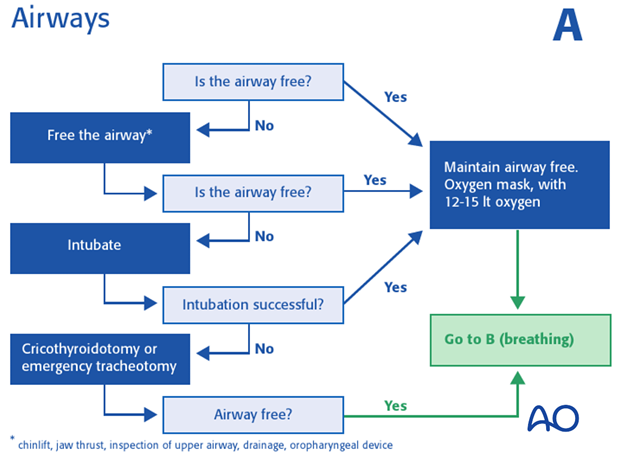
3. Further evaluation when the airway is not free
Clear the airway by suction
The airway is inspected and cleared manually or by suction.

Unconscious patient – Insertion of oropharyngeal device
When the patient is unconscious the mandible is brought anteriorly to open the airway.
Perform a chin lift maneuver by lifting the mandible upward to bring the chin anteriorly.
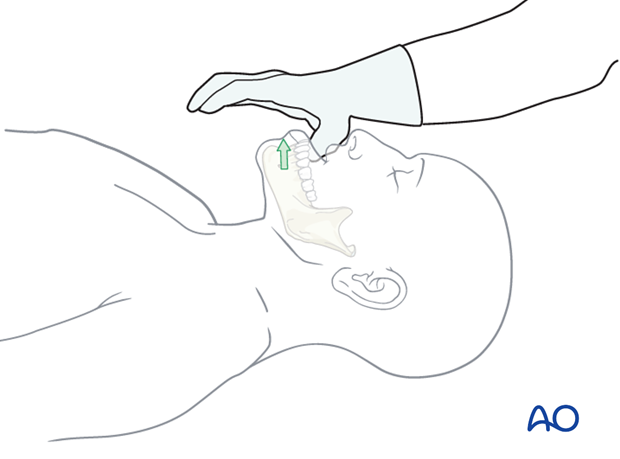
Alternatively a jaw-thrust maneuver can be performed by displacing the mandible forward. This maneuver can be performed in combination with the use of a bag mask device.

To prevent airway obstruction by the tongue an oropharyngeal device is inserted with the concavity facing the palate and then rotated 180°.
This may need to be replaced by endotracheal intubation at a later stage.
If airway is patent:
- administer O2 (100 %, 12 L/min) using a bag-mask
- The neck is immobilized using a cervical collar of the correct size.
- Pulse oximetry monitoring is initiated
- Patient is re-examined and if oxygen saturation < 95 %, evaluate whether this is caused by airway obstruction. Hypoxemia may also be caused by inadequate ventilation (Breathing), and/or Circulatory problems.
- Proceed to evaluate breathing.
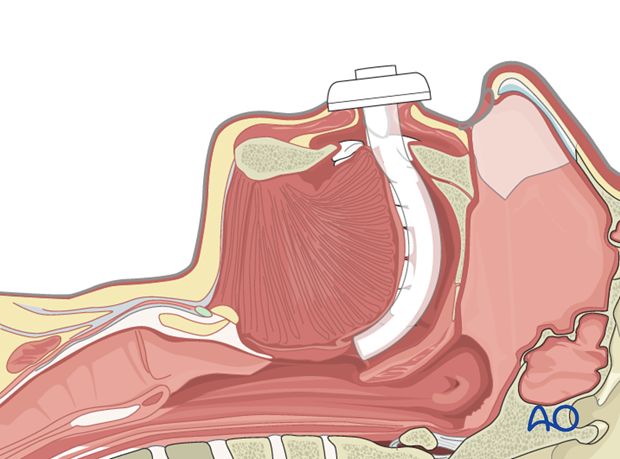
Airway is still not patent or oropharyngeal device not accepted
When the airway is not patent or the patient does not accept an oropharyngeal device, one of the following techniques can be performed.
- Laryngeal mask airway (LMA). This can be performed without anaesthesia, however cannot prevent aspiration completely.
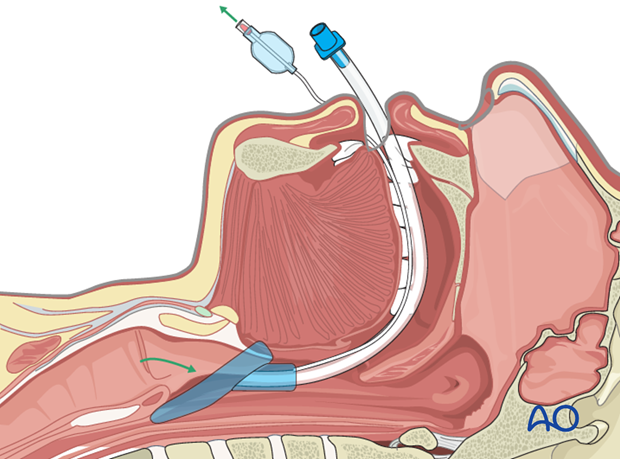
- Endotracheal intubation is the safest way to establish a patent airway, but requires qualified personnel and the administration of anaesthesia drugs.

- Surgical airway with a cricothyroidotomy is only performed in the rare cases where intubation cannot be performed properly.
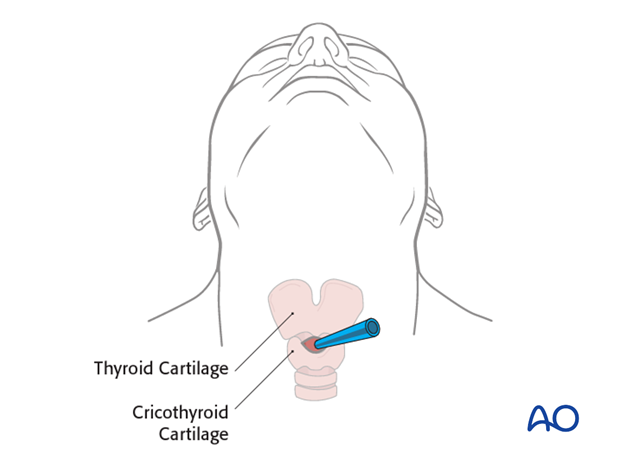
Conscious patient–Endotracheal intubation
If the patient is conscious but the airway still obstructed, an endotracheal intubation should be performed by qualified personnel and under anaesthesia.

4. When the airway is patent
If the airway is patent:
- administer O2 (100 %, 12 L/min)
- The neck is immobilized using a cervical collar of the correct size.
- Pulse oximetry monitoring is initiated
- Patient is re-examined and if oxygen saturation < 95 %, evaluate whether this is caused by airway obstruction. Hypoxemia may also be caused by inadequate ventilation (Breathing), and/or Circulatory problems.
- Proceed to evaluate breathing.














